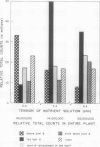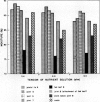Abstract
Low moisture supply, controlled by 3 methods (adding NaCl to a complete nutrient solution, allowing a cut stalk to wilt, or withholding irrigation in the field), decreased the velocity and percentage rate of translocation of 14C-photosynthate. The surplus sucrose not used in growth moved more slowly in the phloem and was stored in the stalk.
Low moisture supply depressed translocation of 14C-photosynthate more severely than it curtailed formation of 14C-photosynthate in the same leaf: therefore, the effect of moisture supply upon translocation was primary.
Low moisture supply retarded profile development in the stem, and a loss in moisture gradient was associated with a steepened slope of the profile. These results indicate a flow mechanism of translocation rather than diffusion.
Results reported now and previously point to the operation of a slow pressure-flow mechanism particularly during the night but also during the day; superimposed upon this general mass transport is the more rapid process of phototranslocation which is independent of sugar gradients and which can cause the accumulation of sucrose at the storage-sink.
During ripening, storage of sucrose in the stalk may be increased by withholding water because less sucrose is hydrolyzed in transit, less is used in growth, and the slowly moving sucrose has more time for transfer from the phloem to the storage parenchyma.
Full text
PDF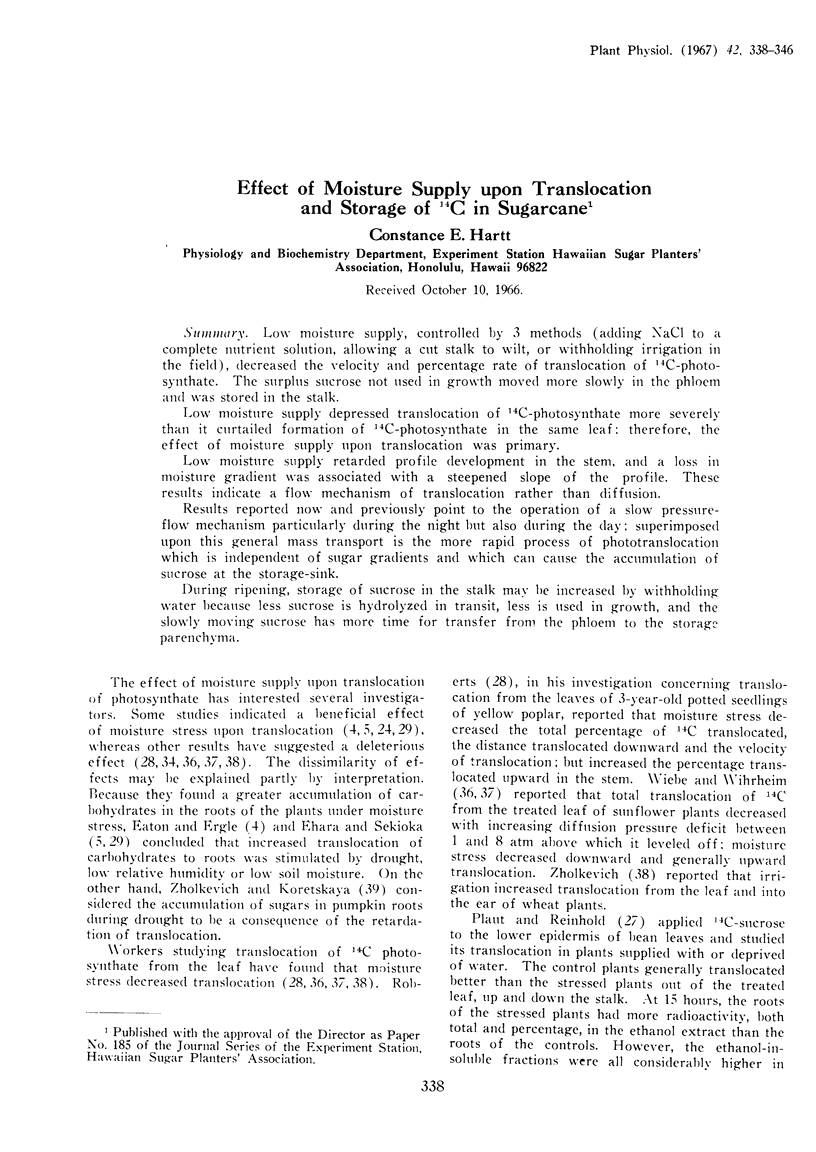
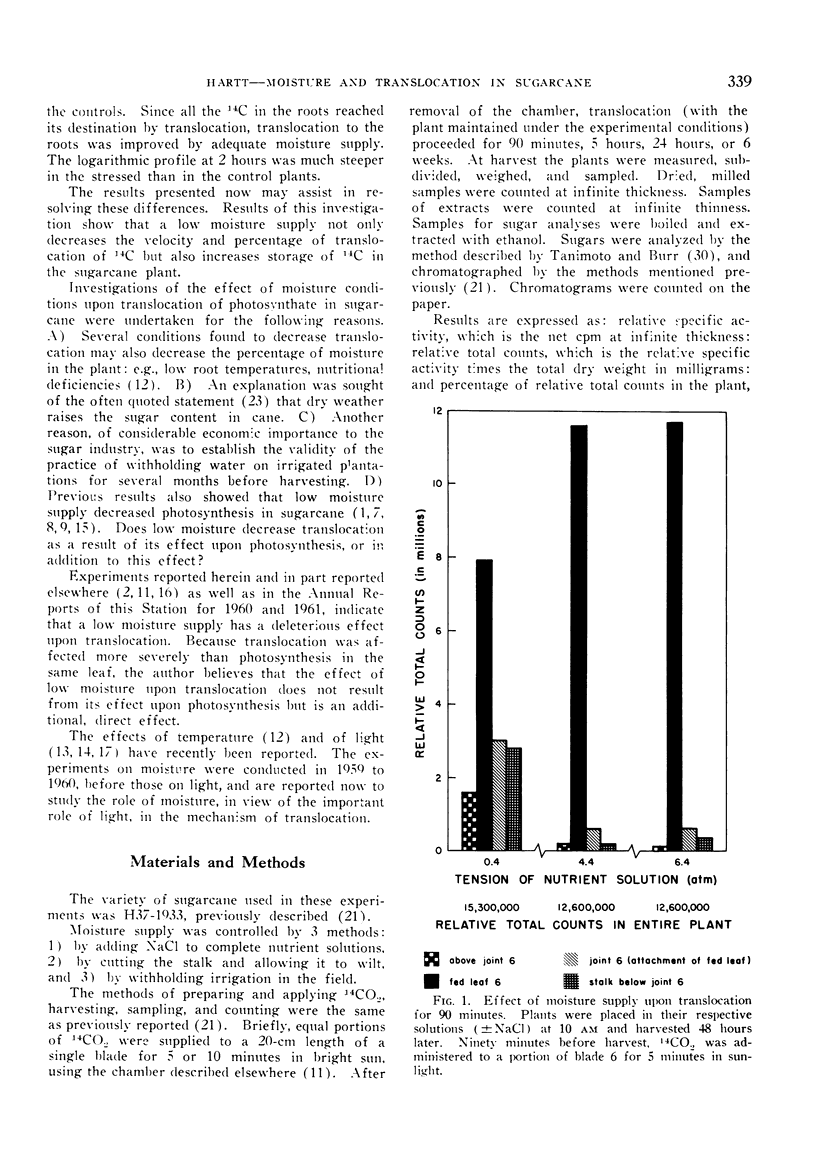
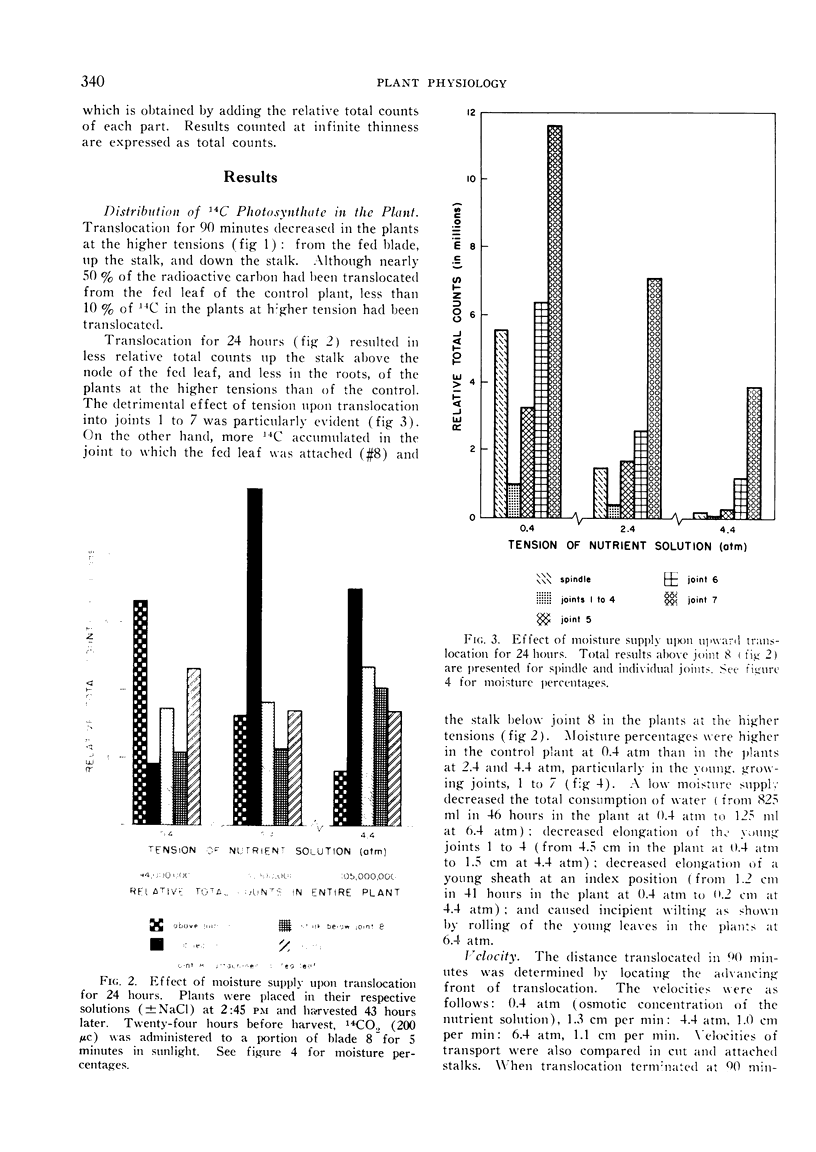
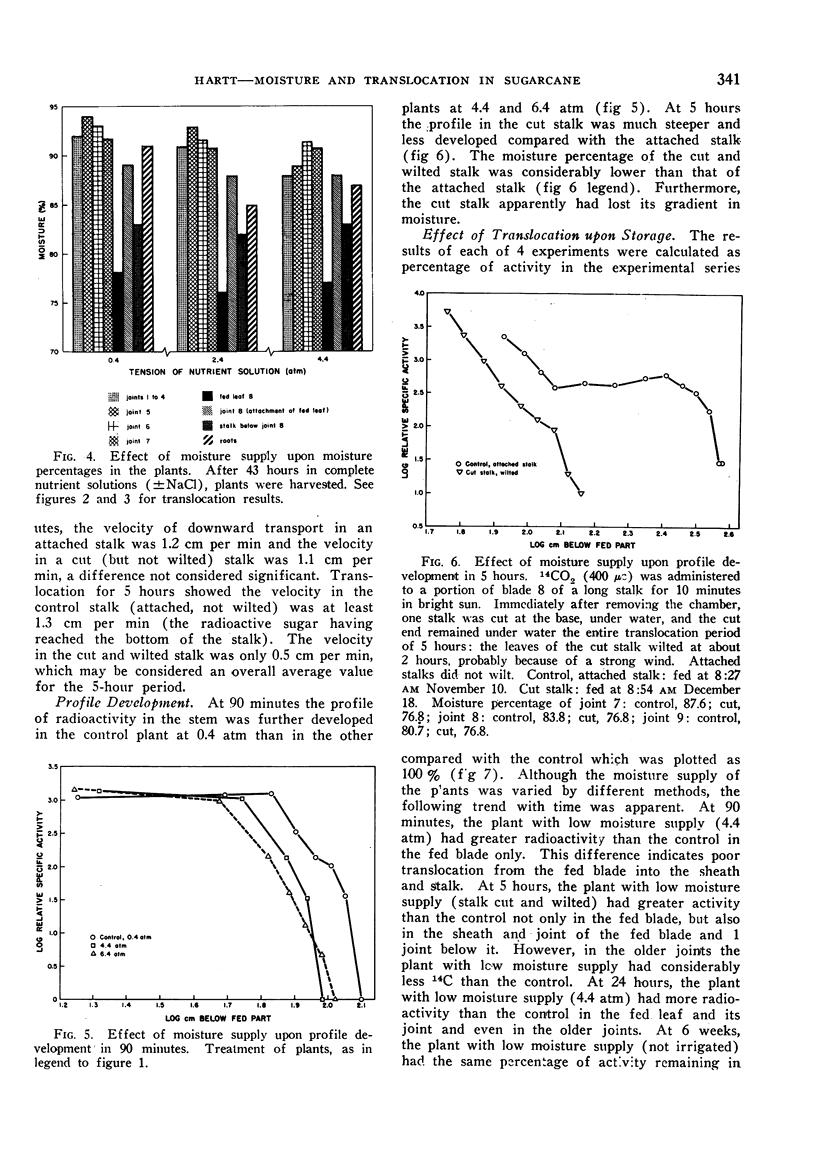
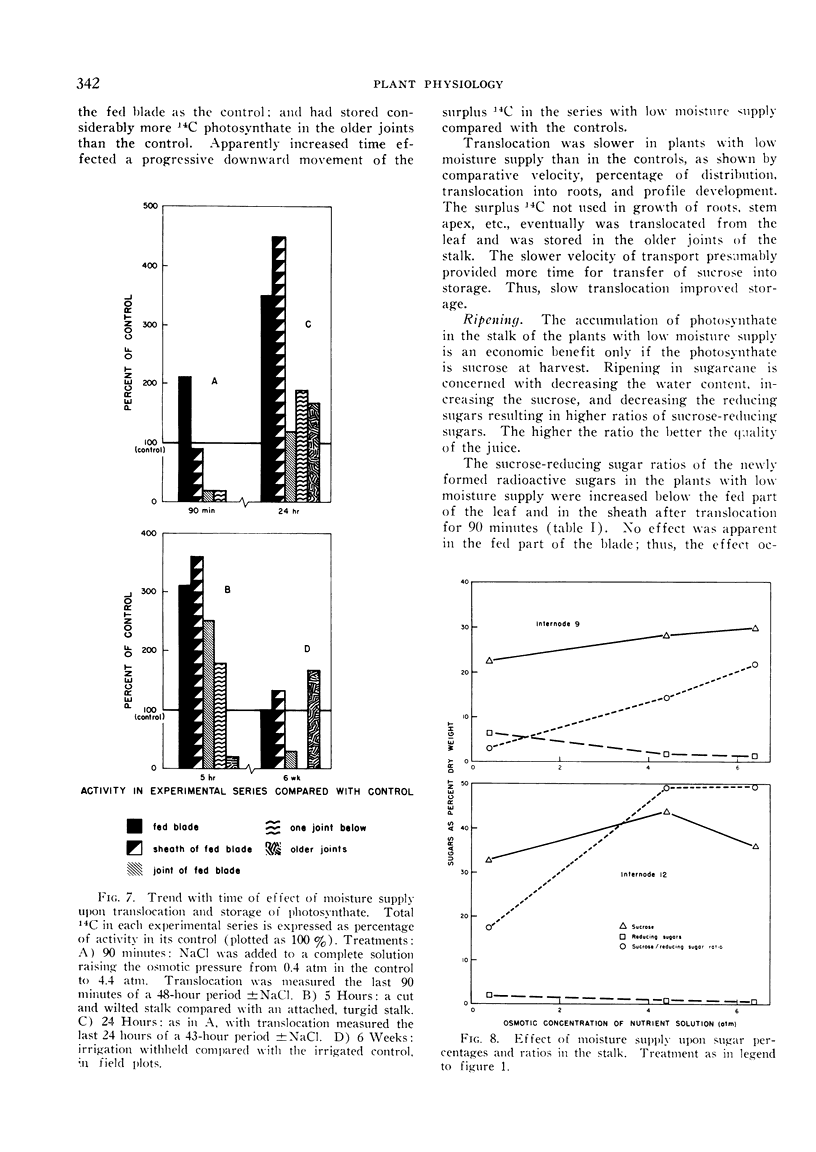
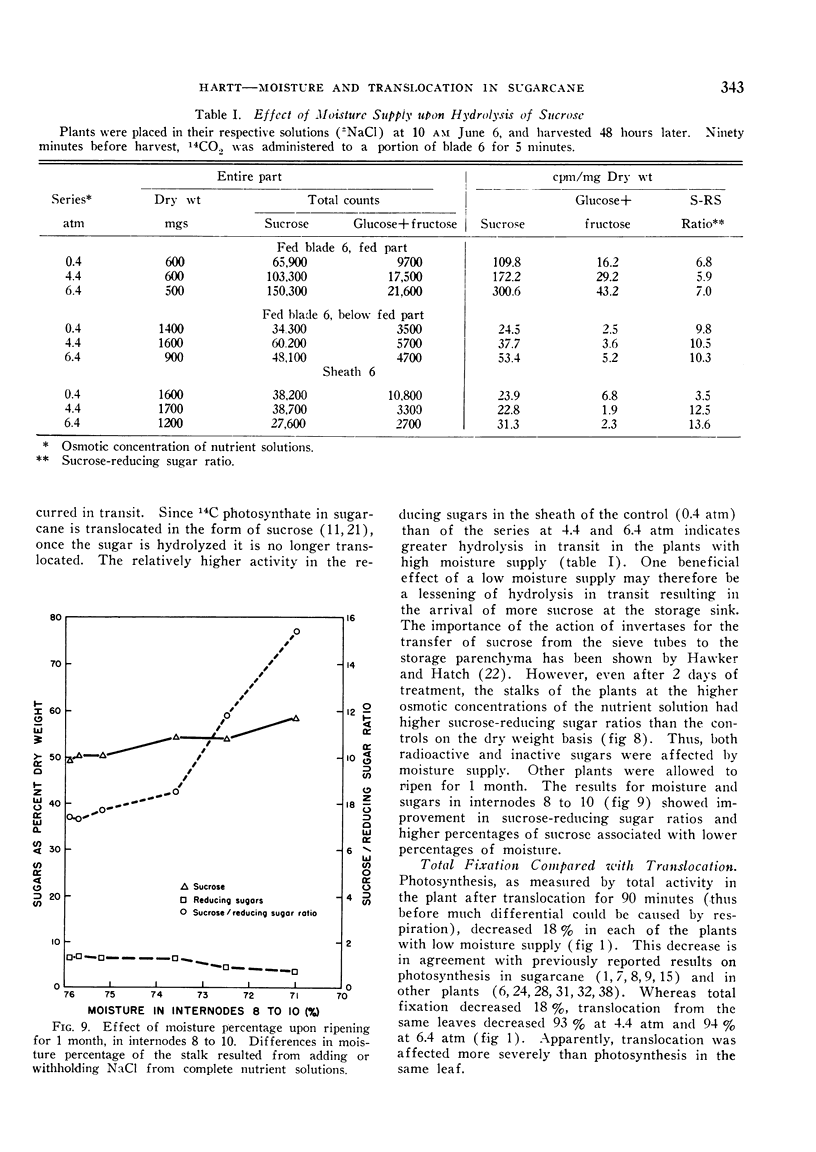
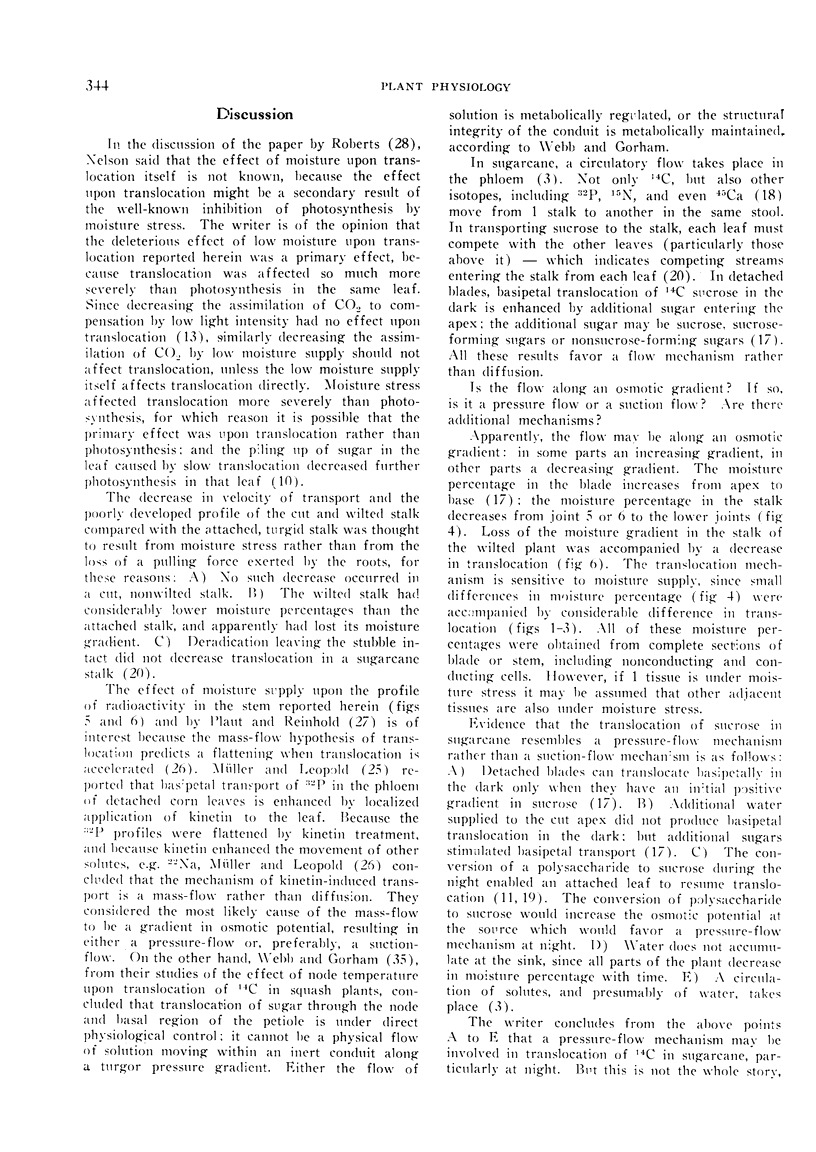


Images in this article
Selected References
These references are in PubMed. This may not be the complete list of references from this article.
- Ashton F. M. Effects of a Series of Cycles of Alternating Low and High Soil Water Contents on the Rate of Apparent Photosynthesis in Sugar Cane. Plant Physiol. 1956 Jul;31(4):266–274. doi: 10.1104/pp.31.4.266. [DOI] [PMC free article] [PubMed] [Google Scholar]
- Eaton F. M., Ergle D. R. CARBOHYDRATE ACCUMULATION IN THE COTTON PLANT AT LOW MOISTURE LEVELS. Plant Physiol. 1948 Apr;23(2):169–187. doi: 10.1104/pp.23.2.169. [DOI] [PMC free article] [PubMed] [Google Scholar]
- Hartt C. E., Kortschak H. P., Burr G. O. Effects of Defoliation, Deradication, and Darkening the Blade upon Translocation of C in Sugarcane. Plant Physiol. 1964 Jan;39(1):15–22. doi: 10.1104/pp.39.1.15. [DOI] [PMC free article] [PubMed] [Google Scholar]
- Hartt C. E., Kortschak H. P., Forbes A. J., Burr G. O. Translocation of C in Sugarcane. Plant Physiol. 1963 May;38(3):305–318. doi: 10.1104/pp.38.3.305. [DOI] [PMC free article] [PubMed] [Google Scholar]
- Hartt C. E., Kortschak H. P. Sugar Gradients and Translocation of Sucrose in Detached Blades of Sugarcane. Plant Physiol. 1964 May;39(3):460–474. doi: 10.1104/pp.39.3.460. [DOI] [PMC free article] [PubMed] [Google Scholar]
- Hartt C. E., Kortschak H. P. Translocation of C in the sugarcane plant during the day and night. Plant Physiol. 1967 Jan;42(1):89–94. doi: 10.1104/pp.42.1.89. [DOI] [PMC free article] [PubMed] [Google Scholar]
- Hartt C. E. The Effect of Temperature upon Translocation of C in Sugarcane. Plant Physiol. 1965 Jan;40(1):74–81. doi: 10.1104/pp.40.1.74. [DOI] [PMC free article] [PubMed] [Google Scholar]
- Hartt C. E. Translocation in colored light. Plant Physiol. 1966 Mar;41(3):369–372. doi: 10.1104/pp.41.3.369. [DOI] [PMC free article] [PubMed] [Google Scholar]



